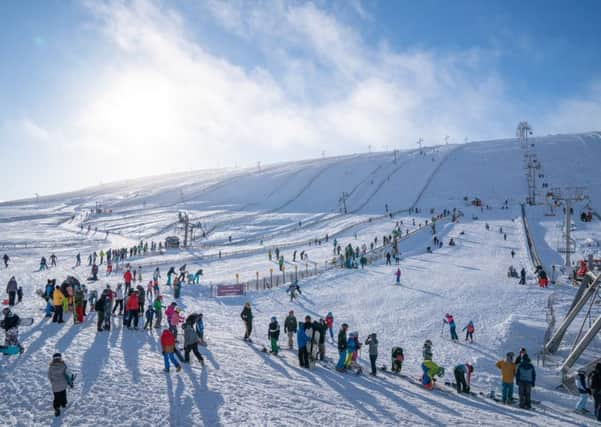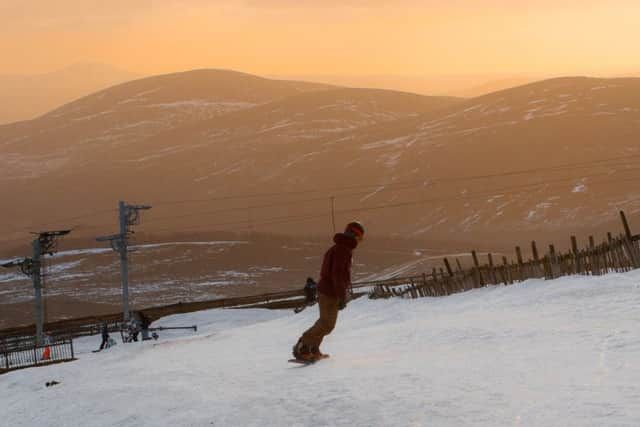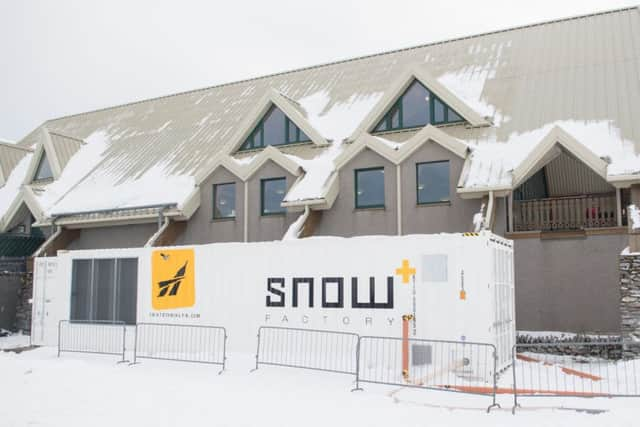The Scottish ski industry’s second-worst winter on record: what went right?


And yet, against all the odds, when the combined “skier days” statistic for CairnGorm, Glencoe, Glenshee, Nevis Range and the Lecht dropped at the end of the season, it wasn’t anything like as cataclysmic as some people had feared. (A “skier day” counts as one person going skiing for a day or two people going skiing for a half day each, and the “skier days” total is typically used as a rough measure of how successful a season has been.) Granted, when compared to stellar winters like 2012-13 (290,996) and 2013-14 (235,303) the figure of 54,481 skier days still sounds pretty appalling, but it was still just enough to nudge past the abysmal 2016-17 total of 54,000, making it only the second-worst season ever.
Coming second-last might not sound like cause for celebration, but in fact, given how disastrous things could have been, it represents a considerable achievement on the part of the people running Scotland’s ski centres. So rather than asking what went wrong last winter, perhaps it makes more sense to look at what went right. How, in a year with no funicular at CairnGorm and with snow cover that was both limited, thanks to below average snowfall, and sporadic, thanks to a series of ferocious thaws, did the Scottish ski centres still manage to achieve a relatively respectable result?
Advertisement
Hide AdAdvertisement
Hide AdThe most obvious answer is artificial snowmaking and, more specifically, Snowfactories. As regular Final Words readers will be aware, Glencoe owner Andy Meldrum was the first Scottish ski industry high heid-yin to see the potential of these powerful, (almost) all-weather snow-making units, using a crowdfunding campaign to help buy one for Glencoe in time for the start of the 2018-19 season. The Lecht quickly followed his lead, and then, as it became clear that CairnGorm was going to have to struggle through the winter without its funicular, Highlands and Islands Enterprise stepped in and ordered a double-decker one to allow snowmaking in the Lower Slopes area of the beleaguered resort.


One big advantage of these hi-tech bits of kit was that they allowed the resorts that had them to open much earlier than usual (as early as 1 December in the case of Glencoe) and according to Meldrum, who is also head of ski-scotland, the marketing body for Scottish skiing, they made a significant difference in what was an extremely challenging year.
“Snowmaking certainly helped us make something of the season,” he says. “Without it I think our numbers would have been about 35 per cent down.”
Another bright spot was the well-above average performance of the Lecht. The smallest of Scotland’s ski centres, it nevertheless accounted for around 50 per cent of the total skier days last season, and they were able to operate for over 100 days, compared to 31 days at CairnGorm and just 24 days at Glenshee. Partly this was thanks to their new Snowfactory, but it was also down to how the weather panned out. According to Meldrum, the resorts in the east of the country – particularly the Lecht and Cairngorm – did better for snow than those in the west, and when wet, mild weather blew in from the Atlantic “the Lecht stayed protected and kept its snow while it got washed away elsewhere.”
If we’re to draw any conclusions from the 2018-19 season, then, perhaps they are as follows. First: as the climate continues to warm, snowmaking is going to become increasingly important. Meldrum believes that in order to futureproof skiing in Scotland, more investment in snowmaking is needed urgently – not just in Snowfactories, which are great for making piles of snow which can then be pushed around the mountain using pisting machines, but also in conventional snow canons. It remains to be seen, however, if any government money for this will be forthcoming.


Second: smart skiers don’t just ski at one resort. If you only ever go to Glenshee, chances are you didn’t get much skiing done last winter; if, on the other hand, you’re a regular at the Lecht, you probably had an OK year. Even in a bad season, there are still great ski days to be had – it can just be a bit trickier to find them.